Related Research Articles
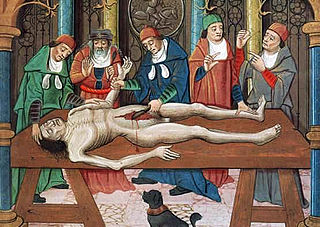
The history of anatomy extends from the earliest examinations of sacrificial victims to the sophisticated analyses of the body performed by modern anatomists and scientists. Written descriptions of human organs and parts can be traced back thousands of years to ancient Egyptian papyri, where attention to the body was necessitated by their highly elaborate burial practices.

Herophilos, sometimes Latinised Herophilus, was a Greek physician regarded as one of the earliest anatomists. Born in Chalcedon, he spent the majority of his life in Alexandria. He was the first scientist to systematically perform scientific dissections of human cadavers. He recorded his findings in over nine works, which are now all lost. The early Christian author Tertullian states that Herophilos vivisected at least 600 live prisoners; however, this account has been disputed by many historians. He is often seen as the father of anatomy.

William Hunter was a Scottish anatomist and physician. He was a leading teacher of anatomy, and the outstanding obstetrician of his day. His guidance and training of his equally famous brother, John Hunter, was also of great importance.
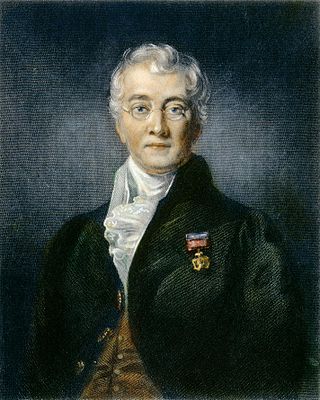
Sir Charles Bell was a Scottish surgeon, anatomist, physiologist, neurologist, artist, and philosophical theologian. He is noted for discovering the difference between sensory nerves and motor nerves in the spinal cord. He is also noted for describing Bell's palsy.

The olfactory peduncle is a bilateral bundle of afferent nerve fibers from the mitral and tufted cells of the olfactory bulb that connects to several target regions in the brain, including the piriform cortex, amygdala, and entorhinal cortex. It is a narrow white band, triangular on coronal section, the apex being directed upward.
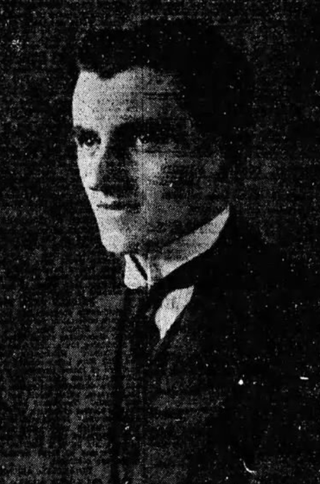
John Irvine Hunter was an Australian professor of anatomy.
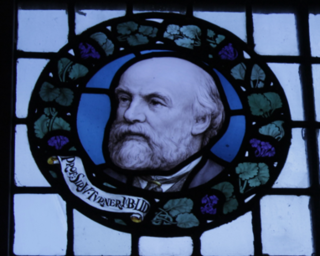
Sir William Turner was an English anatomist and was the Principal of the University of Edinburgh from 1903 to 1916.

John Auer was an American physiologist and pharmacologist. He published nearly 150 papers during his career and is credited with the first description of Auer rods. Auer also contributed to the study of anaphylaxis and helped develop modern thoracic surgery. During World War I, he conducted wartime research with the Rockefeller Institute for Medical Research.

Ewald Rudolf Weibel HonFRMS was a Swiss anatomist and physiologist and former director of the Institute of Anatomy at the University of Bern. He was one of the first scientists to describe the endothelial organelles Weibel–Palade bodies, which are named after him and his Romanian-American colleague George Emil Palade. He was known for his work on the anatomy of gas exchange in lungs on multiple spatial scales using stereology.

Charles Joseph Patten (1870–1948) was an Irish anatomist and ornithologist.

Jeffrey Todd Laitman is an American anatomist and physical anthropologist whose science has combined experimental, comparative, and paleontological studies to understand the development and evolution of the human upper respiratory and vocal tract regions. He is a Distinguished Professor of the Icahn School of Medicine at Mount Sinai in New York City where he holds other positions, including Professor and Director of the Center for Anatomy and Functional Morphology, Professor of Otolaryngology and Professor of Medical Education.
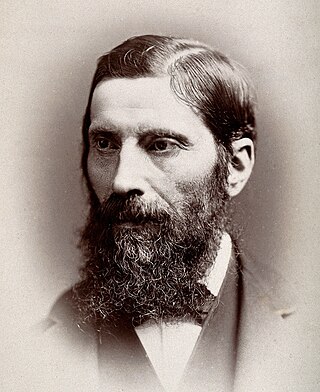
Sir George Murray Humphry, FRS was an English professor of physiology and anatomy at the University of Cambridge, surgeon, gerontologist and medical writer.

The Journal of Anatomy is a monthly peer-reviewed scientific journal published by Wiley on behalf of the Anatomical Society. It covers all aspects of anatomy and morphology. The journal was first published in 1867 and was originally known as the Journal of Anatomy and Physiology, obtaining its current title in October 1916. The editors-in-chief are Phil Cox, Stefan Milz, James N. Sleigh and Neil Vargesson.

Henry Roy Dean, MD, LL.D, D.Sc, FRCP, also known as Prof. H. R. Dean, was a professor of Pathology at the University of Cambridge and Master of Trinity Hall, Cambridge.
The Department of Physiology, Development and Neuroscience, (PDN) is a part of the School of Biological Sciences at the University of Cambridge. Research in PDN focuses on three main areas: Cellular and Systems Physiology, Developmental and Reproductive Biology, and Neuroscience and is currently headed by Sarah Bray and William Colledge. The department was formed on 1 January 2006, within the School of Biological Sciences at the University of Cambridge from the merger of the Departments of Anatomy and Physiology. The department hosts the Centre for Trophoblast Research and has links with the Cambridge Centre for Brain Repair, the Cambridge Stem Cell Institute, and the Gurdon Institute.
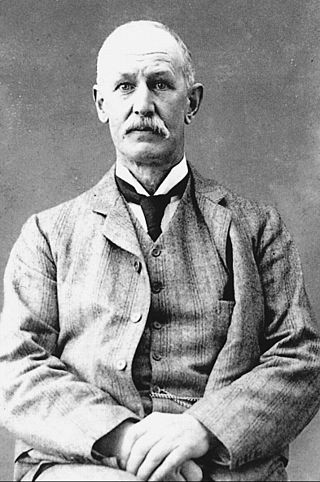
Daniel John Cunningham, was a Scottish physician, zoologist, and anatomist, famous for Cunningham's Text-book of Anatomy and Cunningham's Manual of Practical Anatomy.
AD (Bud) Craig, Jr. was an American neuroanatomist and neuroscientist.
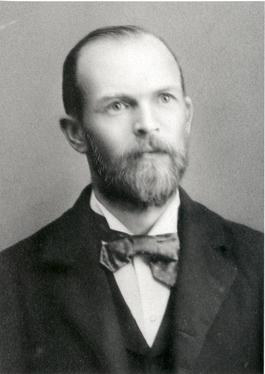
William Keiller was a Scottish born anatomist who trained in anatomy at the Edinburgh Extramural School of Medicine and was appointed as the first Professor of Anatomy at the University of Texas Medical Branch (UTMB) at Galveston, a post he held for 40 years. He served as Dean of the UTMB Medical School and as President of the Texas Medical Association. Many of his anatomical drawings and paintings are preserved and displayed at the Blocker History of Medicine collection at UTMB Moody Medical Library.
Extramural medical education in Edinburgh began over 200 years before the university medical faculty was founded in 1726 and extramural teaching continued thereafter for a further 200 years. Extramural is academic education which is conducted outside a university. In the early 16th century it was under the auspices of the Incorporation of Surgeons of Edinburgh (RCSEd) and continued after the Faculty of Medicine was established by the University of Edinburgh in 1726. Throughout the late 18th and 19th centuries the demand for extramural medical teaching increased as Edinburgh's reputation as a centre for medical education grew. Instruction was carried out by individual teachers, by groups of teachers and, by the end of the 19th century, by private medical schools in the city. Together these comprised the Edinburgh Extramural School of Medicine. From 1896 many of the schools were incorporated into the Medical School of the Royal Colleges of Edinburgh under the aegis of the RCSEd and the Royal College of Physicians of Edinburgh (RCPE) and based at Surgeons' Hall. Extramural undergraduate medical education in Edinburgh stopped in 1948 with the closure of the Royal Colleges' Medical School following the Goodenough Report which recommended that all undergraduate medical education in the UK should be carried out by universities.
Ann Elizabeth Jervie SeftonAO is an Australian neurologist and educator. As a visual scientist, she developed descriptions of the connections between the eye and visual centres of the brain. As a student at the University of Sydney she was the first woman to be elected President of the Medical Society. In 2000, she was appointed an Officer of the Order of Australia (AO) for her services to medical education. She was appointed Pro-Chancellor of the University of Sydney in 2001 and served as Deputy Chancellor from 2004 to 2008.
References
- 1 2 3 Hill, J. P. (1949). "James Thomas Wilson. 1861-1945". Obituary Notices of Fellows of the Royal Society . 6 (18): 643–660. doi:10.1098/rsbm.1949.0018. JSTOR 768945.
- ↑ Young, John Atherton; et al. (1984). Centenary book of the University of Sydney Faculty of Medicine. Sydney: Sydney University Press for the University of Sydney Faculty of Medicine. ISBN 0424001039.
- ↑ Wilson, J. T. (1925). "Multiple Hypoglossal Ganglia in the Calf". Journal of Anatomy. 59 (Pt 4): 345–349. PMC 1249785 . PMID 17104067.
- ↑ Wilson, J. T. (1906). "On the Anatomy on the Calamus Region in the Human Bulb; with an Account of a hitherto undescribed "Nucleus postremus.": Part II". Journal of Anatomy and Physiology. 40 (Pt 4): 357–386. PMC 1287454 . PMID 17232692.
- ↑ Wilson, J. T. (1906). "On the Anatomy of the Calamus Region in the Human Bulb; with an Account of a hitherto undescribed "Nucleus postremus.": Part I". Journal of Anatomy and Physiology. 40 (Pt 3): 210–241. PMC 1287464 . PMID 17232680.
- ↑ Search Results for author Wilson JT on PubMed .
- ↑ "The Anatomical Society of Great Britain and Ireland - Presidents of the Society" (PDF). The Anatomical Society. Retrieved 2012-10-21.